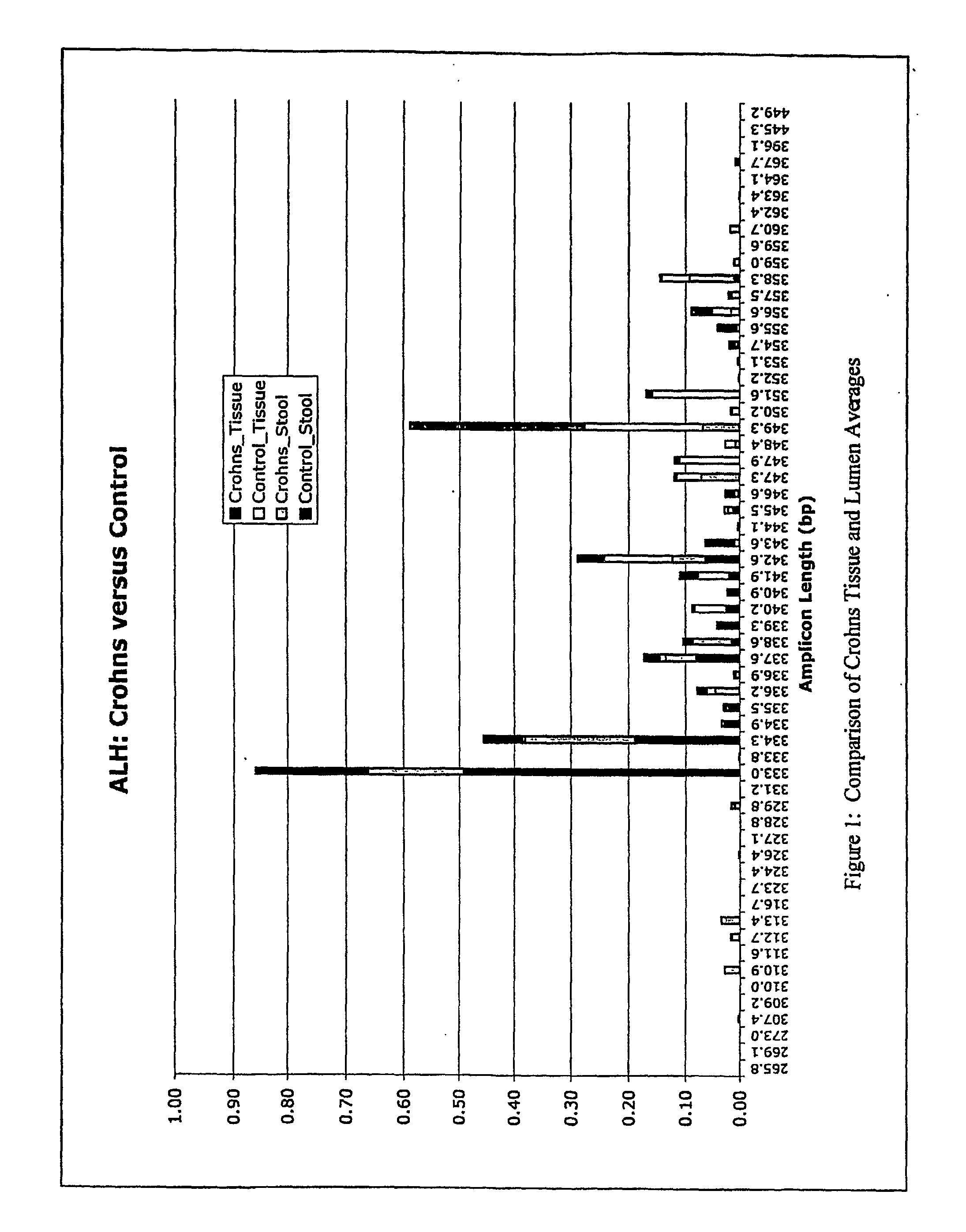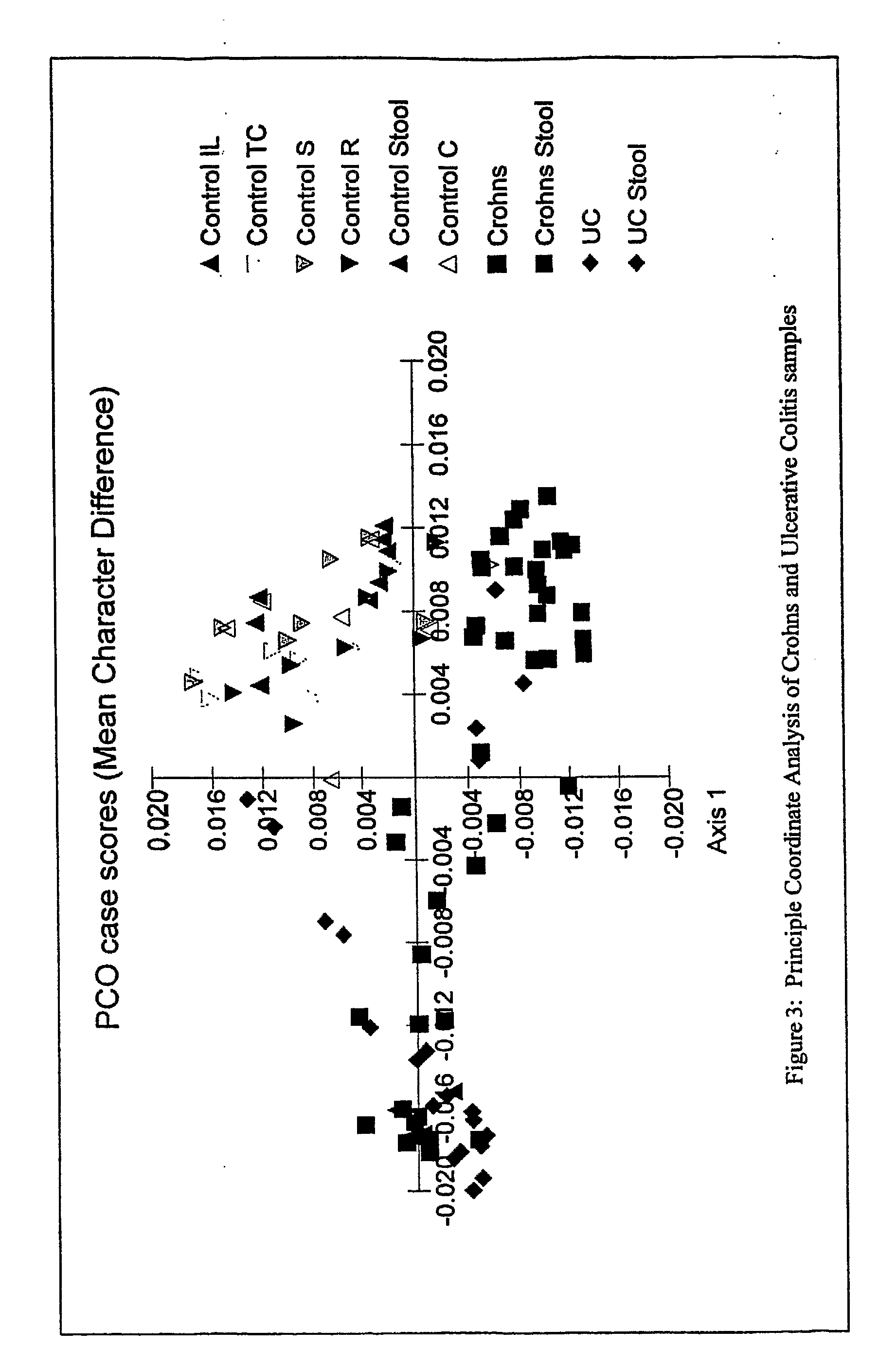Compositions and methods for diagnosing colon disorders
a colon disorder and composition technology, applied in the field of compositions and methods for diagnosing colon disorders, can solve the problems of no study to date identifying any specific microfloral pattern or organism, and the precise mechanism of pouchitis remains elusiv
- Summary
- Abstract
- Description
- Claims
- Application Information
AI Technical Summary
Benefits of technology
Problems solved by technology
Method used
Image
Examples
examples
[0063]Sample Collection and DNA extraction: Endoscopic mucosal tissue samples were collected from the terminal ileum, cecum+ascending colon, transverse colon, sigmoid colon and the rectum of patients with IBD and Pouchitis as well as healthy controls undergoing the colonoscopy. Some of the tissue samples were washed in saline prior to analysis to remove non-adherent bacteria (washed vs. unwashed samples). Retained lumen samples were also collected via the endoscope at the time of procedure. The samples were fingerprinted for bacterial patterns in 4 control, 2 UC, 4 CD and 3 patients with pouchitis, and 5 patients with pouch without pouchitis using the ALH methodology. The DNA extractions were performed using the Bio101 soil kit from Qbiogene, Inc, Montreal, Quebec according to the manufacturers instructions. These ALH amplicons were pooled, then cloned and sequenced to identify the bacterial components that were indicative of the disease state.
[0064]Amplicon Length Heterogeneity (AL...
PUM
| Property | Measurement | Unit |
|---|---|---|
| nucleic acid fingerprinting | aaaaa | aaaaa |
| length | aaaaa | aaaaa |
| frequency | aaaaa | aaaaa |
Abstract
Description
Claims
Application Information
 Login to View More
Login to View More - R&D
- Intellectual Property
- Life Sciences
- Materials
- Tech Scout
- Unparalleled Data Quality
- Higher Quality Content
- 60% Fewer Hallucinations
Browse by: Latest US Patents, China's latest patents, Technical Efficacy Thesaurus, Application Domain, Technology Topic, Popular Technical Reports.
© 2025 PatSnap. All rights reserved.Legal|Privacy policy|Modern Slavery Act Transparency Statement|Sitemap|About US| Contact US: help@patsnap.com



